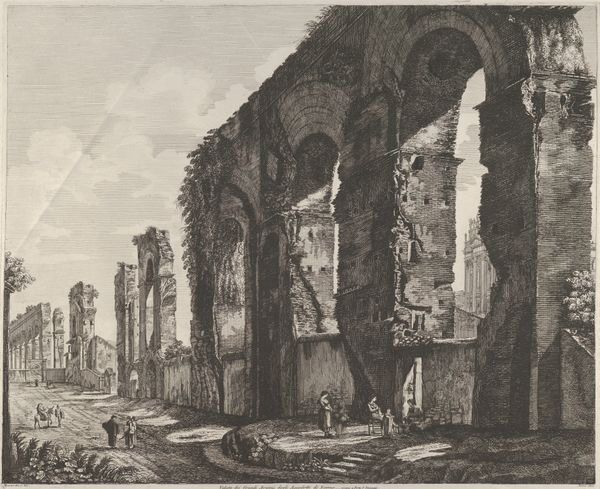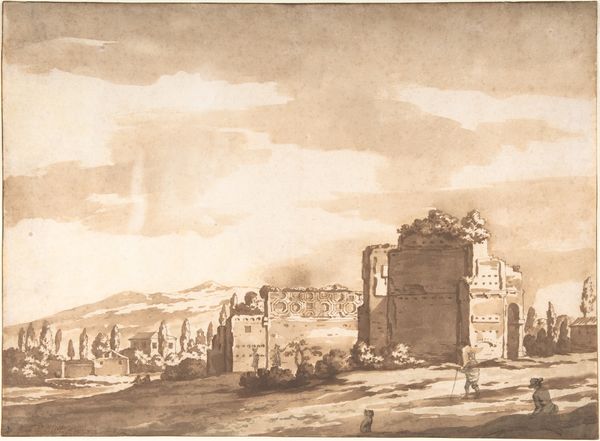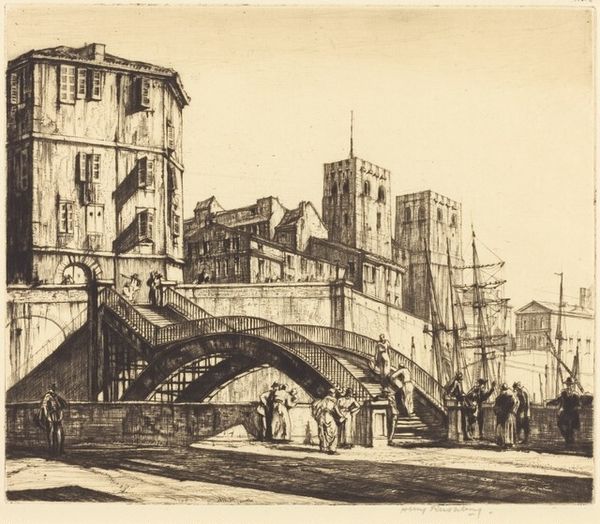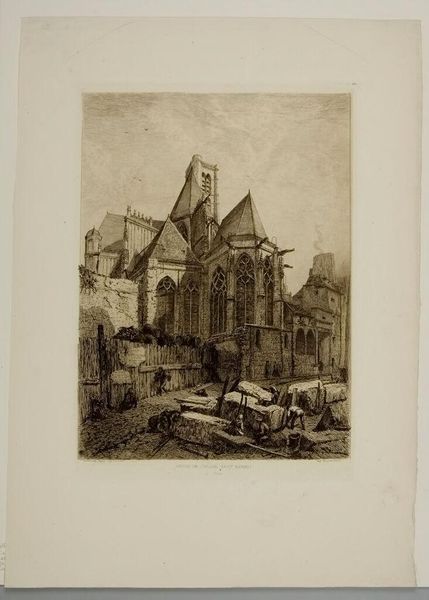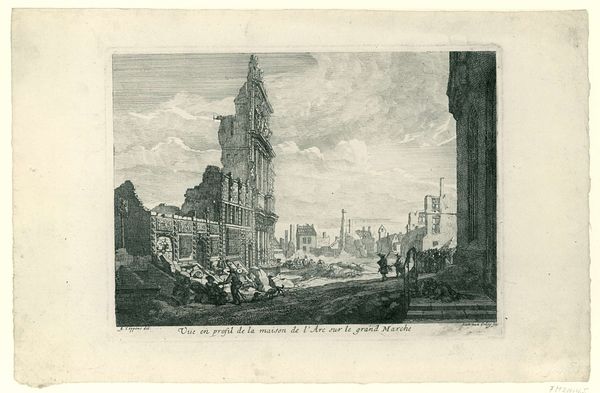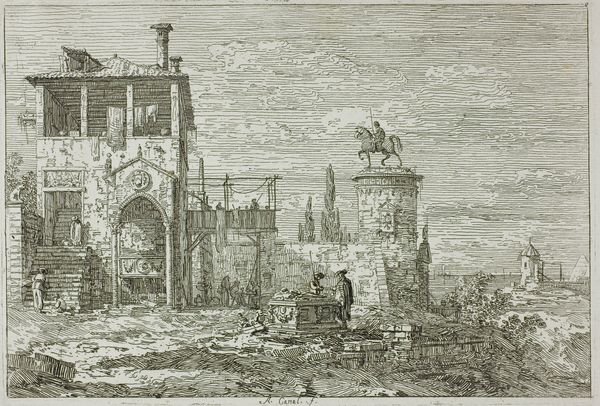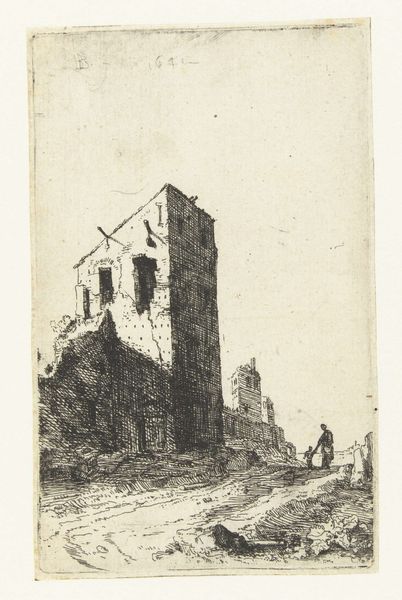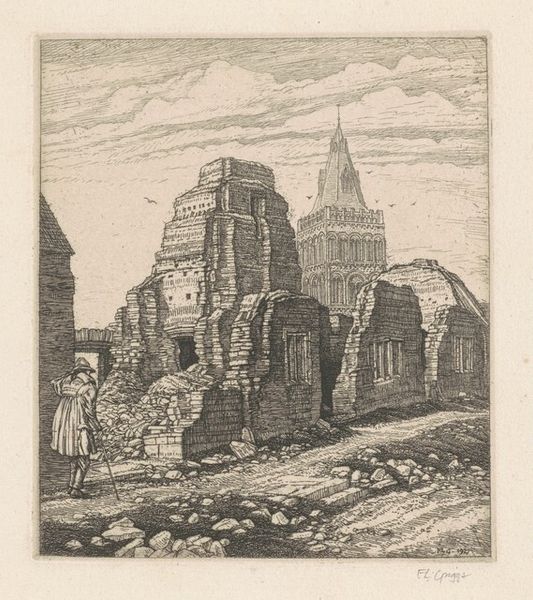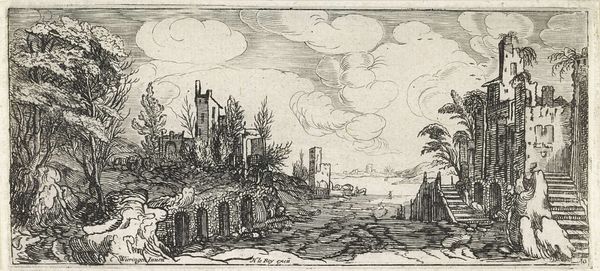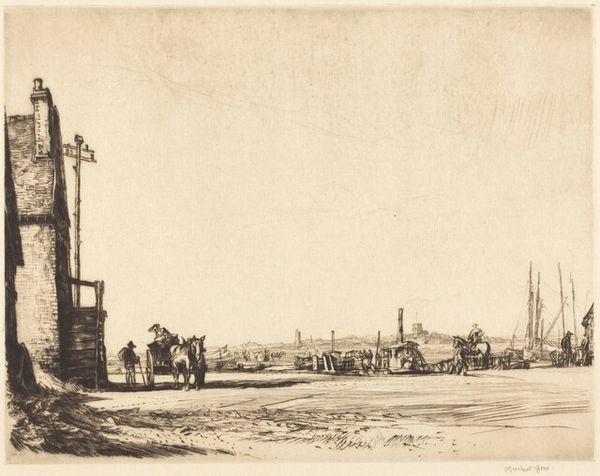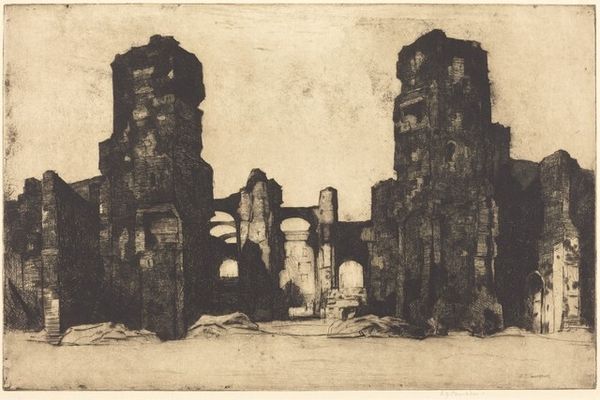
print, etching
# print
#
etching
#
landscape
#
cityscape
#
modernism
#
realism
Dimensions: plate: 19.5 × 23.7 cm (7 11/16 × 9 5/16 in.)
Copyright: National Gallery of Art: CC0 1.0
Curator: Look at the way the artist, Henry Rushbury, created this cityscape. "Porto Maggiore, Orvieto," an etching from 1925, presents the viewer with an Italian city perched dramatically atop a cliff. Editor: It has an almost overwhelming, brooding feel to it. That sheer cliff face and the way the light catches the buildings create a palpable sense of monumentality, like the city is hewn from the stone itself. I notice how much of the plate area is occupied by landscape rather than people; in this image, civilization overwhelms human activity. Curator: Rushbury, a master of etching, uses line and shadow to construct form here. Consider the incredible level of detail he achieves, which required extensive labor and skill. The materiality of the print is crucial; it is mass-produced art affordable to more than just the elite. Editor: Absolutely, but consider the broader context of such imagery. Representations of European cities held particular weight in the 1920s, acting as emblems of civilization and tradition. How did the imagery become iconic of the place, for those who couldn't go there, for instance? Prints made art transportable. Rushbury sold the image and place at once. Curator: The details matter. Note the varied line work. See how some areas are densely worked with fine lines, creating deep shadows and textures that really define the structures, but the landscape gets quick and almost nervous line work. Editor: And how that careful attention to texture interacts with the city's status. Orvieto was experiencing modern life with photography. The artist worked hard at their craft to bring new visual value. Also, in terms of image circulation, how does this print contribute to a specific narrative or understanding of Italy for an interwar audience? Curator: These prints are tactile, reflecting an intense connection with craft tradition while portraying these Italian sites. This work serves not just as an artistic achievement but as evidence of skilled labor—both mental and manual. Editor: That consideration makes you view the final work differently. It also allows you to explore this relationship to historical movements—from the Grand Tour to interwar modernism. Curator: Right, and considering it within the history of production lets us consider the conditions, economics, and values circulating during the time this image was made. Editor: Considering social context certainly allows one to ask questions not only about its beauty or technique but also about its active role within society.
Comments
No comments
Be the first to comment and join the conversation on the ultimate creative platform.
